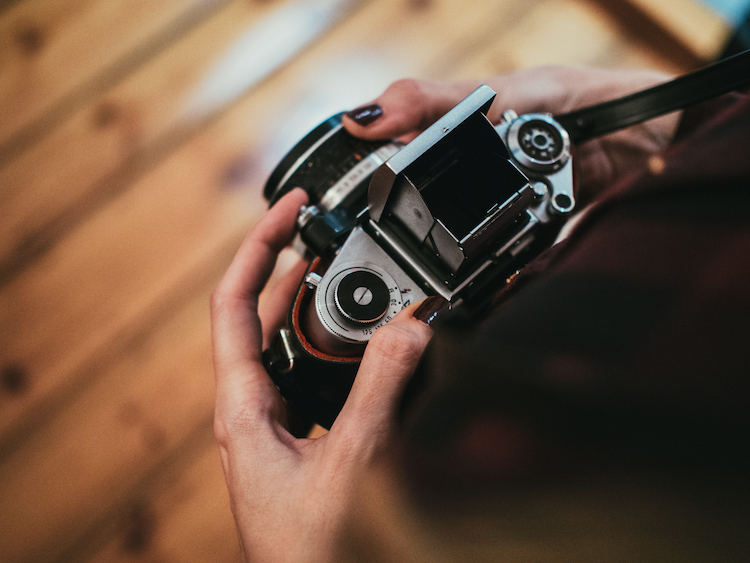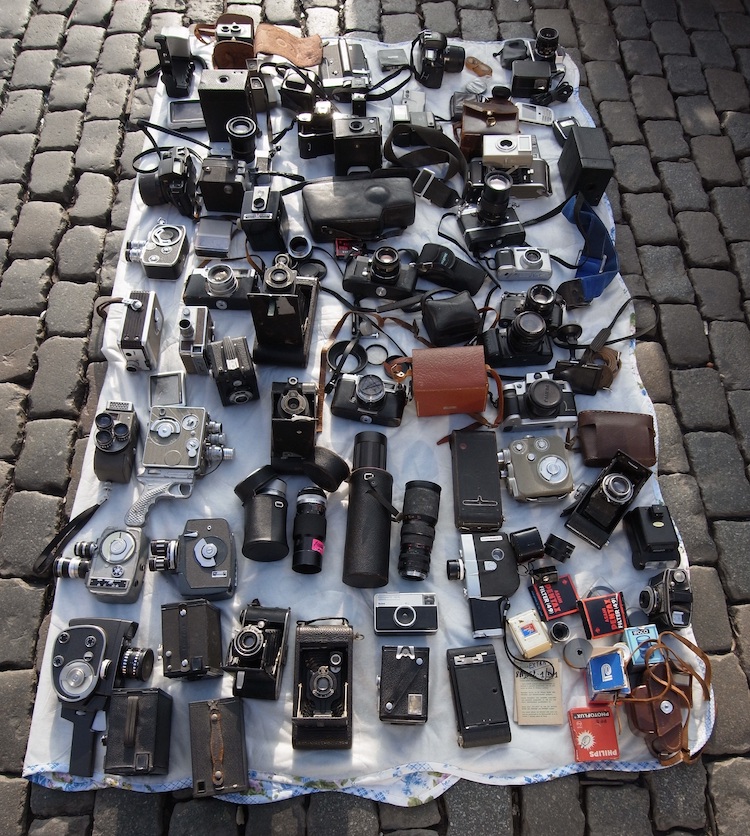Features
5 ways to make your photography better for the environment (and your wallet!)
By Kate Crittenden - 6 min read
5 practical steps you can take to make your photography more sustainable for the planet and your bank account
With updated models being released almost every year, no matter how good your photography gear is, it can soon feel outdated in the face of an ever-changing industry. This can quickly add up as it’s no secret that photography is an expensive profession, with some cameras costing upwards of $6,000 USD (I’m looking at you, Sony A1). This high turn-over of technology isn’t unique to photography but it does add to the environmental problems around the production and disposal of electronic goods.
A camera may contain up to 69 different elements from the periodic table, including mined precious metals and rare raw materials which are nonrenewable resources. This makes recycling electronic devices and their materials key to sustainable production - however, this isn’t very well managed.

Image by Adam Vradenburg
In 2019, the world generated 53.6 million metric tonnes of electronic waste: more than the combined weight of all adults in Europe. Yet, almost 83% of it wasn’t recycled properly. Current e-waste contains about $57 billion USD worth of precious raw materials. When these aren’t recovered correctly, heavy metals and toxins leach from the discarded tech into the soil, air, and water systems, causing significant harm to humans and the environment.
But all hope is not lost. We’ve put together a list of 5 practical steps you can take to make your photography more sustainable for the planet and your bank account.
1. Buy secondhand
It sounds obvious but buying secondhand gear is a great way to shrink your environmental impact and save money. This form of ‘recycling’ lengthens the useful lifetime of a camera or lens, minimising e-waste, and does not unnecessarily add a new device into circulation. As well as lowering your environmental impact, buying second-hand gear is cheaper too. Depending on how old the device is and its condition, you can often save more than 40%.
If you’re not confident in choosing secondhand gear, an equally environmentally-friendly alternative is to look for gear that has been refurbished by the seller or manufacturer. A refurbished camera means that it may have been faulty but has since been repaired, and now works like new. While not as cost-effective as secondhand, buying refurbished gear is more reliable and still a green alternative to buying new.

Image by Anton Flow
2. Rent your gear
If you need extra gear for a short term project, a holiday, or to test out a new genre of photography, renting is a more environmentally conscious choice than buying new gear as it reduces the extraction of new resources and the generation of waste.
Renting is also a smaller upfront investment than a new piece of gear, making it wallet-friendly too. Rental agreements run from a single day to a week, to months and years, and often have the option to apply to purchase, without losing the money you invested in renting. This allows you to ‘try-before-you-buy’ and lessens the chances of “buyer’s remorse” and the device sitting unused on your shelf.
Although there is some debate about whether the heavy use that rental gear undergoes shortens its lifetime, in general, it’s still considered a great option for short term use. To be even more environmentally conscious - try and rent gear from your local camera shop, as the environmental impact of transporting rental goods can stack up.
3. Reduce storage
Whether you backup your photos to external hard drives, or online in the cloud, reducing the number of files you store will be better for the environment, and save you money.
By culling at least all the out of focus, badly exposed or accidental shots you take from your backups, you can decrease your storage needs. In the long run, this will mean you won’t have to buy new external hard drives as often or purchase more cloud space, saving you money and the environment from unnecessary electronics.
The jury is still out as to whether cloud storage has better environmental credentials than buying personal storage devices, as the equipment used for cloud storage tends to generate a lot of heat which needs cooling, using even more energy. Data centres used for cloud computing account for 1% of global energy usage, using 200 terawatt-hours (TWh) each year, which is more than the entire country of Iran produces.
If you’re keen to save even more space, you can reduce the size of the files too. Software like JPEGmini and Rawsie (which work with JPEGs and RAW files respectively) can compress file sizes by up to 80% without compromising on quality.

Image by Joe Chia
4. Go to your library
How many of us have piles of photography books and magazines on our shelves (many of which may not have even been read)? The environmental impact of books isn’t insignificant with one book creating 1.2 kg of Carbon Dioxide over its life cycle. Instead of having a dusty stack, check out your local library. Second-hand books and library books have the lowest environmental impact compared to buying new books and even compared to e-readers. Costing next-to-nothing, your library will often have a wide variety of photography books, even if they’re just coffee-table books for inspiration.
5. Hold onto your gear for as long as possible
It can be tempting to get the latest technology, particularly in an industry like photography. Many technology companies manufacture their products with the intention that the product will become obsolete, unfashionable or unusable before its manufactured lifetime is up. This strategy, called planned obsolescence, means we feel the need to buy new gear as soon as there is a replacement.
But by using your camera gear for longer, you’re doing a great job in minimising your environmental impact. In a study on German electronics by the Öko-Institut, they found that using devices such as mobile phones, and laptops for longer than average could save “almost four million tonnes of CO2(emissions) and 3.7 billion euro per year.”
Increasing the lifetime of your camera can be fairly easy if you take good care of it, and try and get any damage repaired instead of replacing it if you can. Often having a thorough read of the manual and understanding all of your current camera’s features will make upgrading less appealing.
